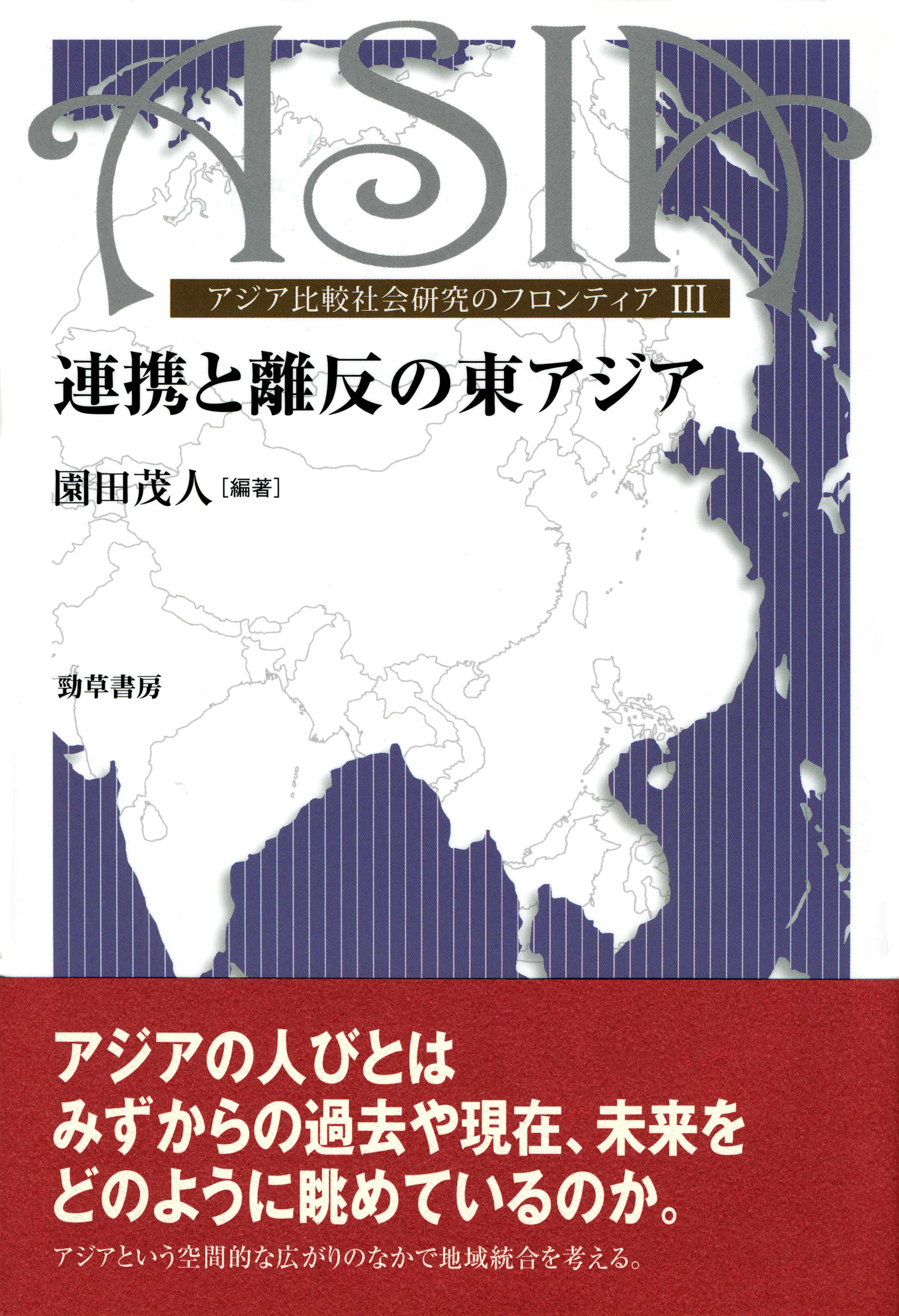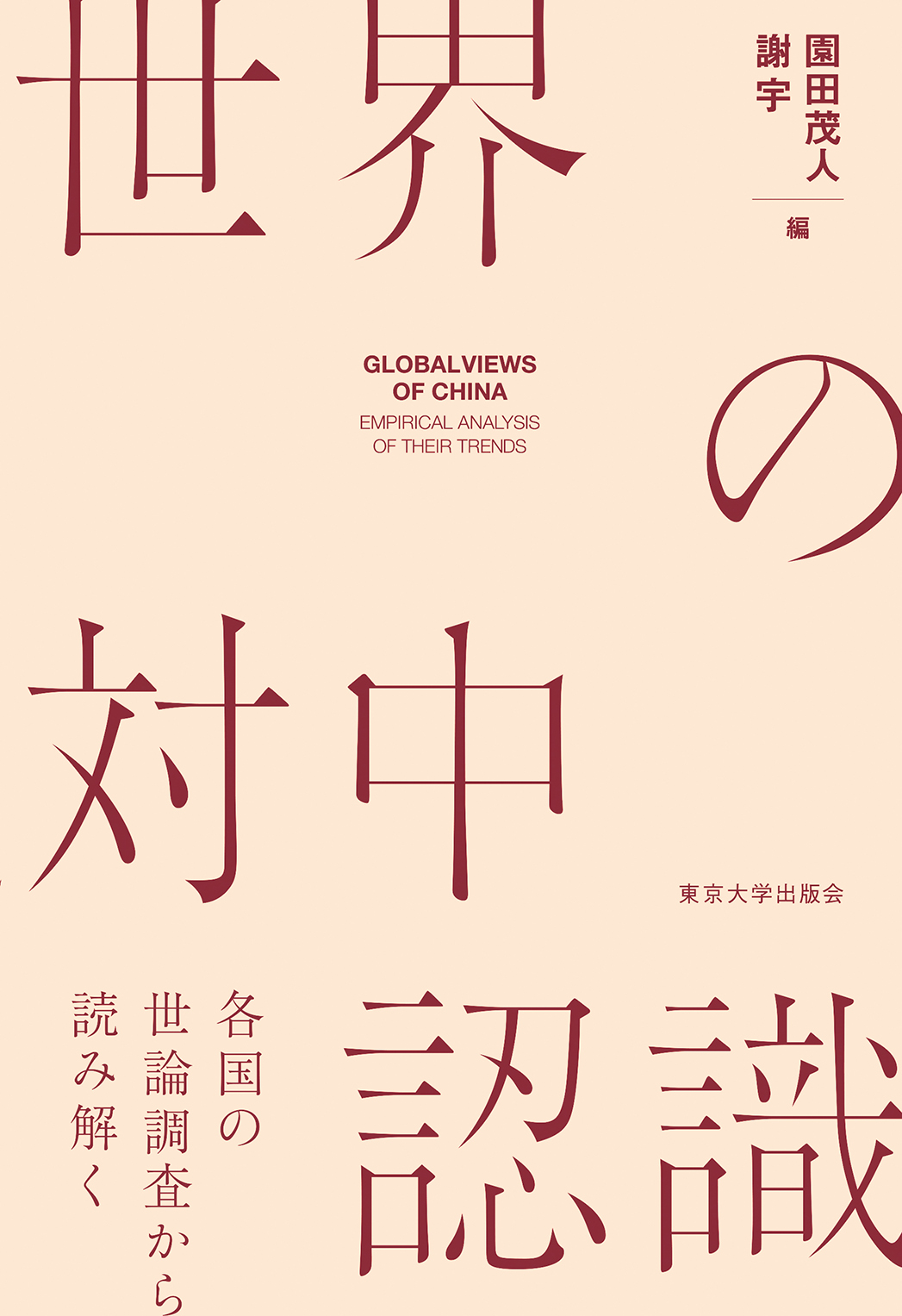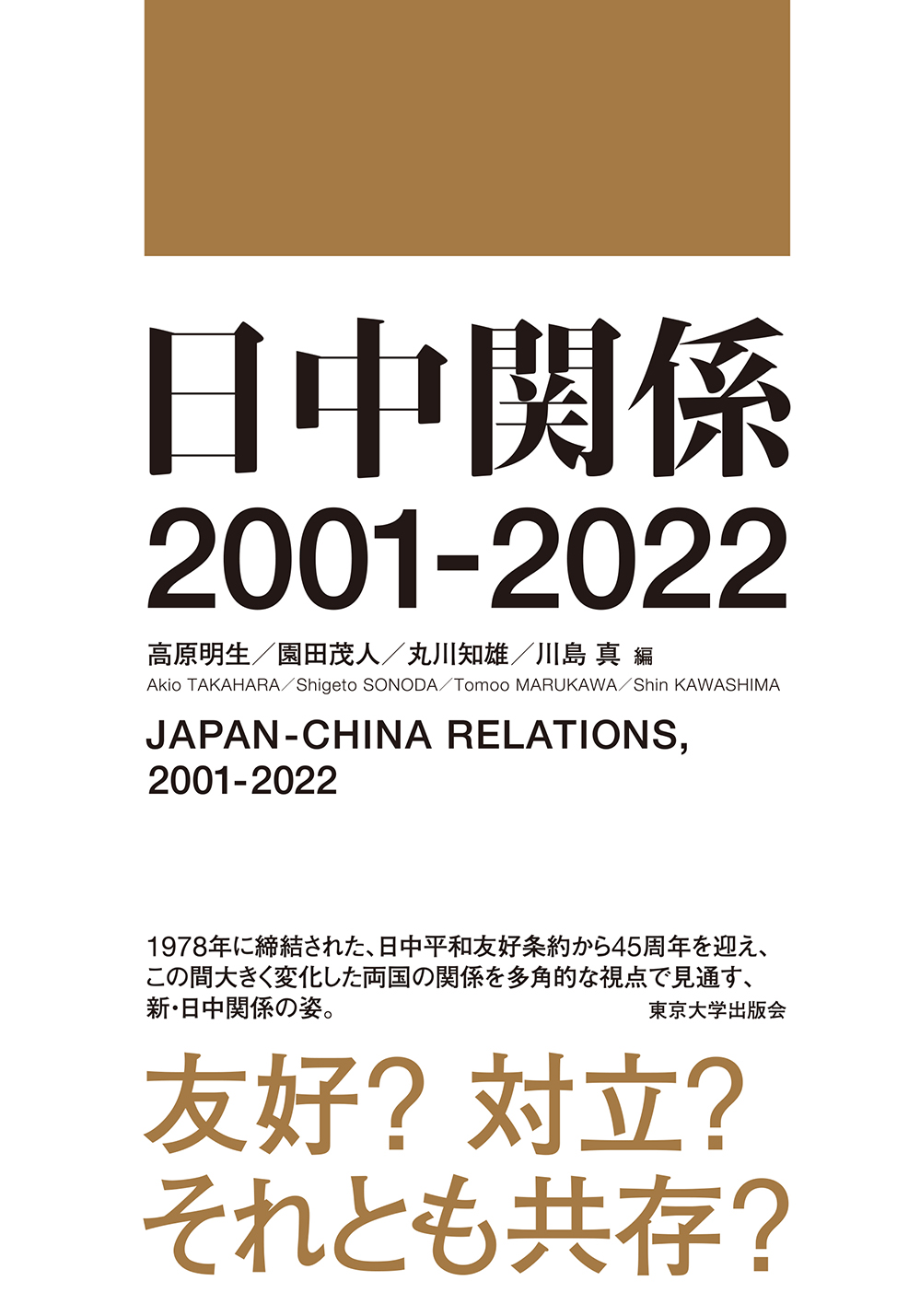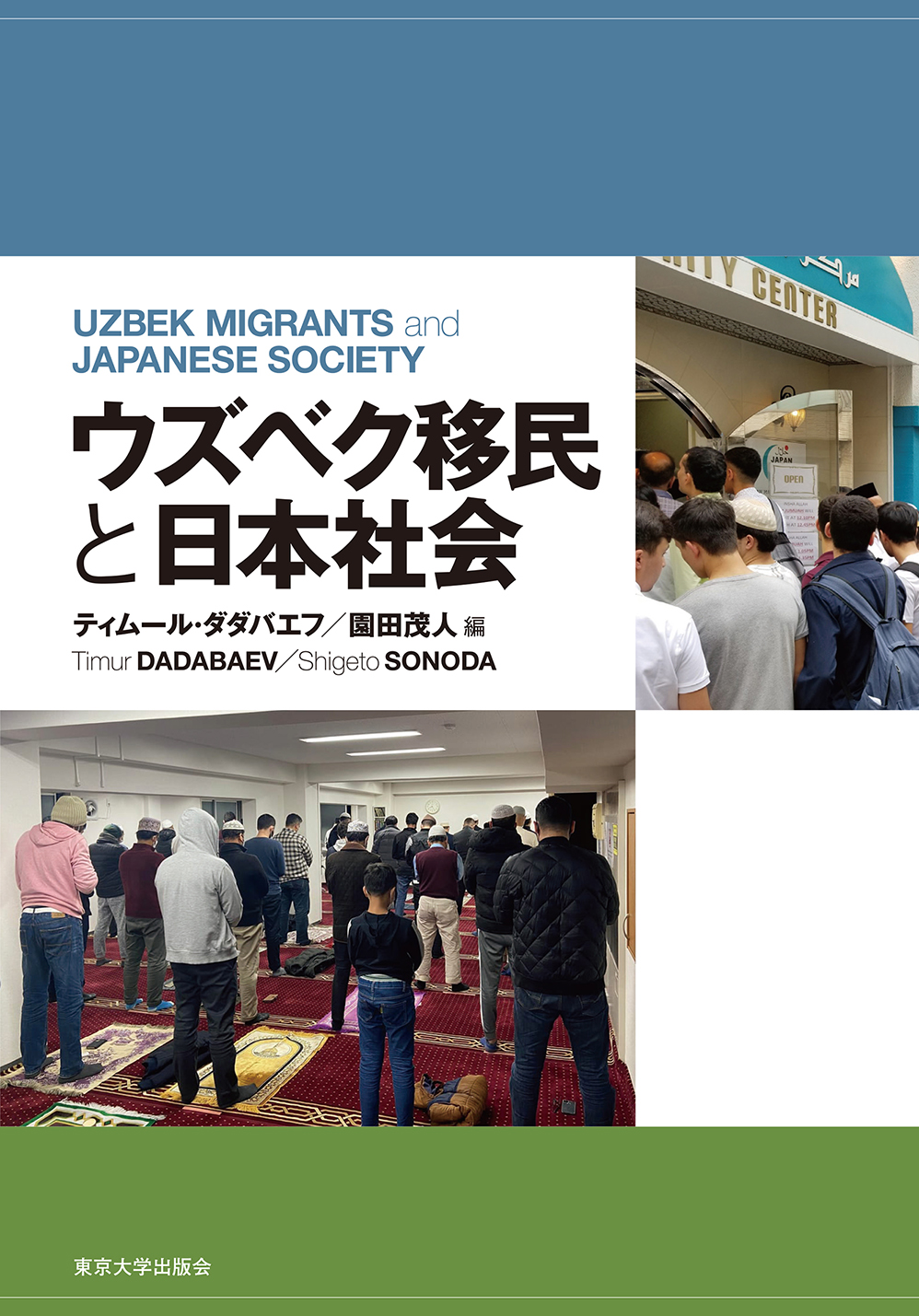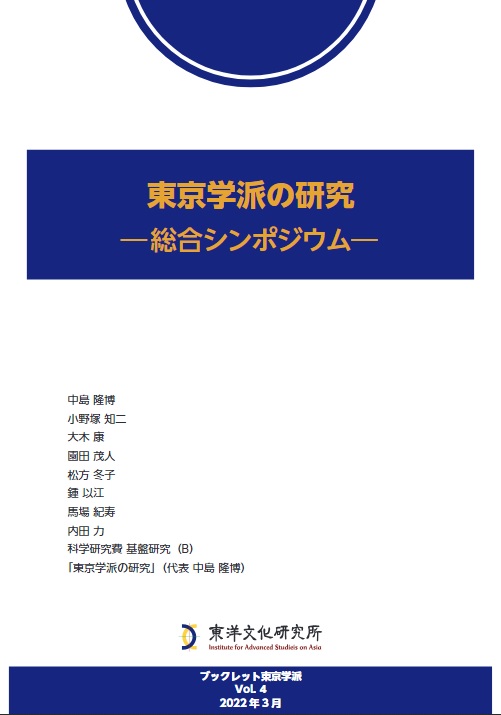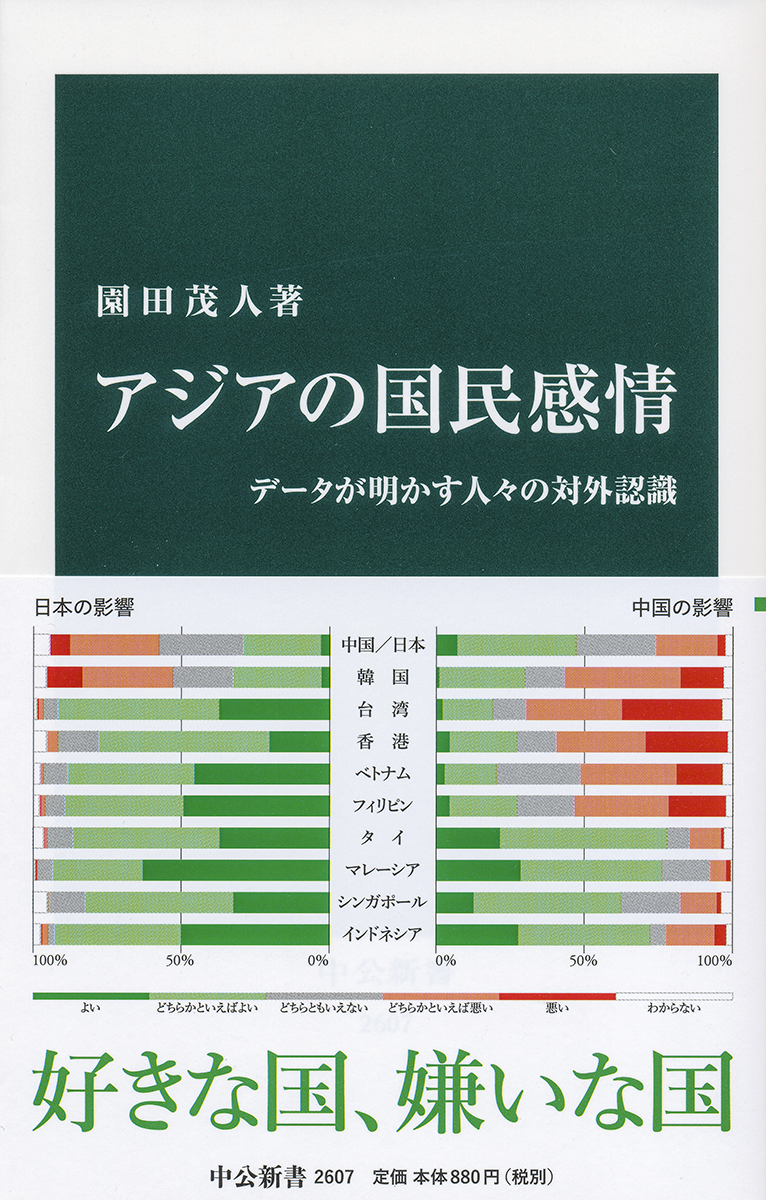
Title
Asia no kokumin kanjo (National Sentiments in Asia - Comparative analysis of views of foreign countries)
Size
272 pages, paperback pocket edition
Language
Japanese
Released
2020
ISBN
978-4-12-102607-1
Published by
CHUOKORON-SHINSHA
Book Info
See Book Availability at Library
Japanese Page
Since the beginning of the 21st century, an increasing number of large-scale surveys have come to be conducted to understand people’s view of foreign countries, thanks to the development of information technology. As far as Japan is concerned, the Cabinet Office and Ministry of Foreign Affairs have begun investigating Japan’s image of foreign countries as well as foreign countries’ image of Japan in the 1970s. Euro-American research institutes and organizations such as Gallup, Pew Research Center, and BBC World Service have initiated worldwide surveys targeting multiple countries to understand people’s views of global issues and some countries’ behaviors. These surveys, however, focused on powerful states such US, Russia, and China, and most Asian countries have been out of the target of their analysis. Though some countries/regions in Asia, namely South Korea, the Philippines, Taiwan, and Hong Kong, have accumulated survey data on their perception of foreign countries, it is still quite difficult to systematically compare them chronologically.
This book, based on the analysis of the data collected in 2008, 2013, and 2018 which focused on undergraduate students in flagship universities in Asia (namely Japan, South Korea, China, Taiwan, Hong Kong, Philippines, Vietnam, Thailand, Malaysia, Singapore, and Indonesia), was published to overcome such deficiencies. In a 2008 survey, we asked a professional research company to collect data, but it is undergraduate students of University of Tokyo and Waseda University in a 2013 survey and my Ph.D. students in a 2018 survey that took the initiative to design the questionnaire, distribute and collect the filled-in questionnaires, and analyze the collected data. After the data collection, young scholars including graduate students in Japan as well as in other parts of Asia have been using the data for the sake of their research.
Numerous interesting findings are discussed in the book. First, (1) mutual perceptions among ASEAN countries are not as high as their views of Japan, South Korea, US, and Australia. Second, (2) views of China are dividing Asia into two groups; one is composed of Japan, Vietnam, Philippines, and Taiwan, which have more negative views of China, while the other is composed of Thailand, Malaysia, Singapore, and Indonesia, which have more positive views of China. Third, (3) some of the bilateral relations of two countries which are regarded as politically and culturally similar, including Japan-South Korea, China-Vietnam, and Malaysia-Indonesia, show relatively lower mutual evaluation. Finally, (4) the national image of China is better than the personal image of the Chinese in Southeast Asia while the personal image of the Chinese is better than the national image of China in East Asia, which are typical examples. These empirical findings will enrich arguments in (1) ASEAN studies and studies on regional integration, (2) Chinese diplomatic relations, (3) international relations, and (4) studies on overseas Chinese, which have been studied rather independently in conventional social science and area studies.
The book contains many interesting figures and tables, written in plain Japanese. The author would be elated if you were interested in reading the book.
(Written by SONODA Shigeto, Professor, Institute for Advanced Studies on Asia / 2021)



 Find a book
Find a book




